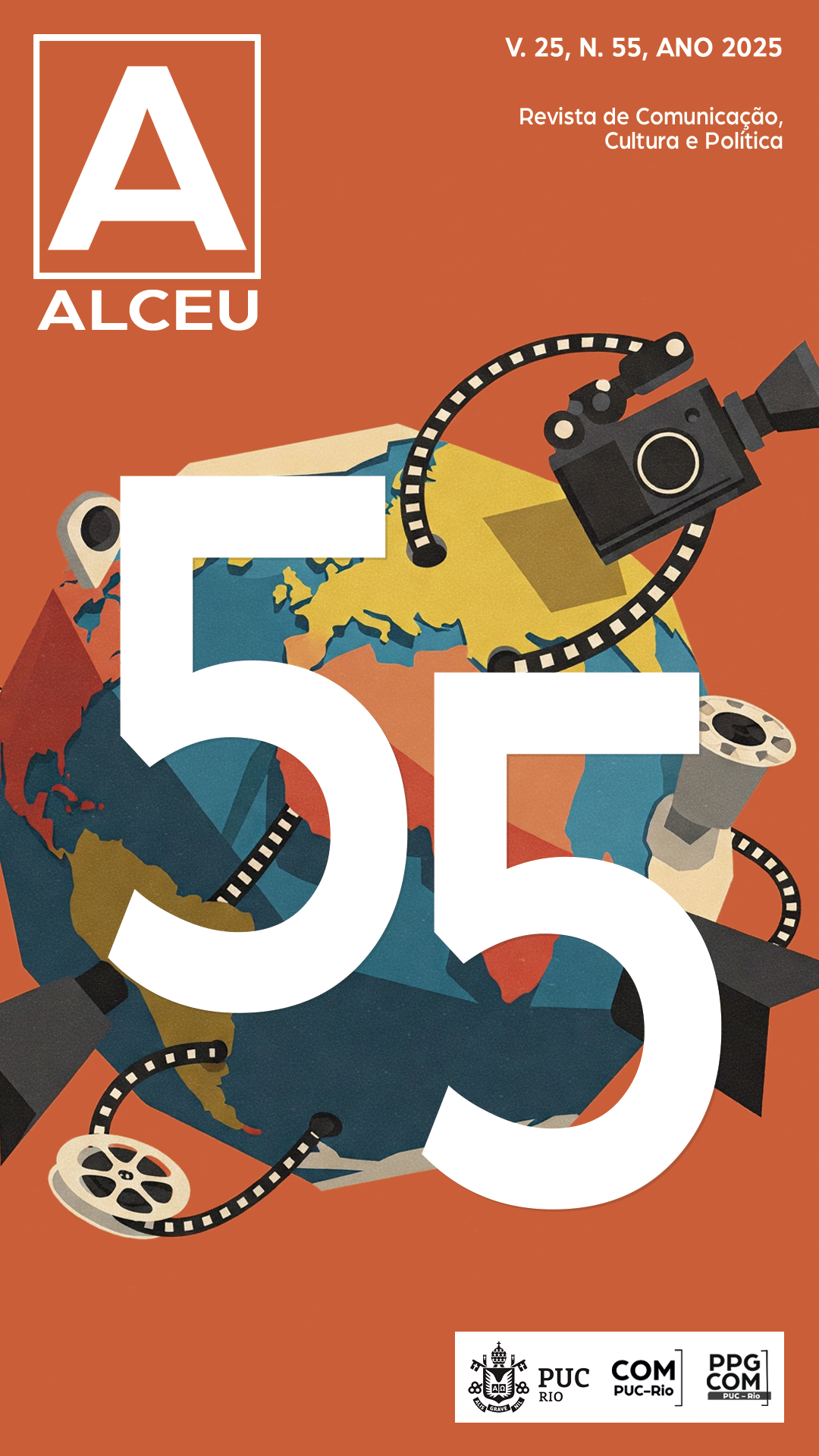From mimesis to the closed world
generative AI and the abstraction of reality in Trump’s Gaza
DOI:
https://doi.org/10.46391/ALCEU.v25.ed55.2025.456Keywords:
Generative AI, Algorithmic Visuality, Post-ImagesAbstract
Investigating how AI-generated images relate to the world and what kind of reality they construct, this article examines how generative AI produces plausible images through probabilistic models that synthesize patterns from vast databases, without any link to concrete events. Drawing on the works of Baudrillard, Barthes, Flusser, Edwards, and Lemos, it argues that these creations establish a new regime in which realism is determined by algorithmic coherence rather than optical capture. To illustrate this point, the case study of a video posted on Trump’s official account—depicting a “paradisiacal” Gaza from a capitalist viewpoint—exemplifies the construction of a hyperrealist, reactionary narrative in which AI-driven manipulation simulates an alternative reality presented as both natural and inevitable. Ultimately, the article questions the implications of a self-referential system that challenges traditional notions of representation and authenticity.
Downloads
References
BARTHES, Roland. A câmara clara: notas sobre a fotografia. Rio de Janeiro: Nova Fronteira, 1984.
_______. Mitologias. Rio de Janeiro: Bertrand Brasil, 2011.
BAUDRILLARD, Jean. Simulacros e Simulação. Lisboa: Relógio d’Água, 1991.
BENDER, Emily M.; GEBRU, Timnit; MCMILLAN-MAJOR, Angelina; SHMITCHELL, Shmargaret. On the Dangers of Stochastic Parrots: Can Language Models Be Too Big? In: FAccT ’21: Proceedings of the 2021 ACM Conference on Fairness, Accountability, and Transparency, 2021. p. 610–623.
BROWN, William. Supercinema: Film-Philosophy for the Digital Age. Oxford: Berghan, 2013.
CEDENO MONTAÑA, Ricardo; VAGT, Christina. Constructing the invisible: computer graphics and the end of optical media. communication+1, v. 7, n. 1, p.1-23, 2017.
CRARY, John. Técnicas do observador. Rio de Janeiro: Contraponto, 2012.
EDWARDS, Paul N. The Closed World: Computers and the politics of discourse in Cold War America. Cambridge: The MIT Press, 1996.
FLUSSER, Vilém. O universo das imagens técnicas: ou elogio da superficialidade. São Paulo: Annablume, 2008.
FOUCAULT, Michel. Vigiar e punir: nascimento da prisão. Petrópolis: Vozes, 1987.
GUIMARÃES, Denise Azevedo Duarte. As imagens digitais e seus paradoxos tecnoestéticos na reinvenção do cinema. Comunicação & Informação, v. 23, p. 1–18, 2020.
JORGE, Marina Soler. O cinema e a imagem verdadeira. ARS (São Paulo), v. 11, n. 22, p. 99–120, 2013.
KARMANN, Bjorn. Paragraphica. 2023. Disponível em: https://bjoernkarmann.dk/project/paragraphica. Acesso 27 fev. 2025.
KNORR-CETINA, Karin. Scopic media and global coordination: the mediatization of face-to-face encounters. In: LUNDBY, Knut (Org.). Mediatization of Communication. Berlim: De Gruyter, 2014, p. 39-62.
KITTLER, Friedrich. Mídias ópticas: Curso em Berlim, 1999. Rio de Janeiro: Contraponto, 2016.
KRAPP, Peter. Computer Legacies: digital cultures of simulation. Cambridge: The MIT Press, 2024.
LEMOS, André. Deepreal de Gaza. Substack, 27 fev. 2025. Disponível em: https://andrelemos.substack.com/p/deepreal-de-gaza. Acesso em: 28 fev. 2025.
LISSOVSKY, Maurício. O Phi da fotografia. Rio de Janeiro: UFRJ, 2021.
MEYER, Roland. The New Value of the Archive: AI Image Generation and the Visual Economy of 'Style'. Image, v. 37, n. 1, p. 100-111, 2023.
MITCHELL, W.J. Reconfigured Eye: visual truth in the post-photographic era. Cambridge: MIT Press, 1992.
MORI, Masahiro et al. The uncanny valley. Energy, v. 7, n. 4, p. 33-35, 1970.
PARIKKA, Jussi. A Geology of Media. Minneapolis: University of Minnesota Press, 2015.
PLAZA, Júlio; TAVARES, Mônica. Processos criativos com os meios eletrônicos: poéticas digitais. São Paulo: HUCITEC, 1998.
PRINCE, Stephen. True Lies: Perceptual realism, digital images and film theory. Film Quaterly, California, p.27-37, 1996.
SALVAGGIO, Eric. How to Read an AI Image: Toward a Media Studies Methodology for the Analysis of Synthetic Images. Image, v. 37, n. 1, p. 83-99, 2023.
WASIELEWSKI, Amanda. "Midjourney Can't Count": Questions of Representations and Meaning for Text-to-Image Generators. Generative Imagery: Towards a 'New Paradigm' of Machine Learning-Based Image Production, 37(1), 2023, p. 71-83.
WINTHROP-YOUNG, Geoffrey. The Kultur of Cultural Techniques. Cultural Politics, v. 10, n. 3, 2014.
Downloads
Published
How to Cite
Issue
Section
License
Copyright (c) 2025 ALCEU

This work is licensed under a Creative Commons Attribution-NonCommercial 4.0 International License.






